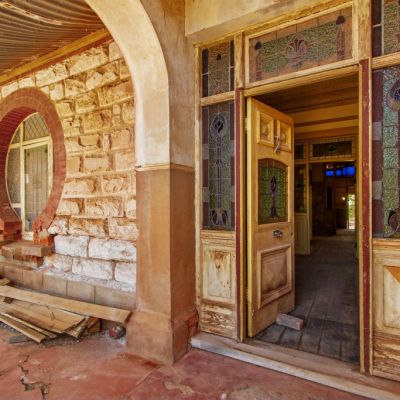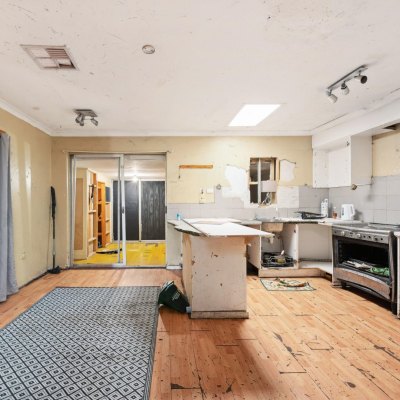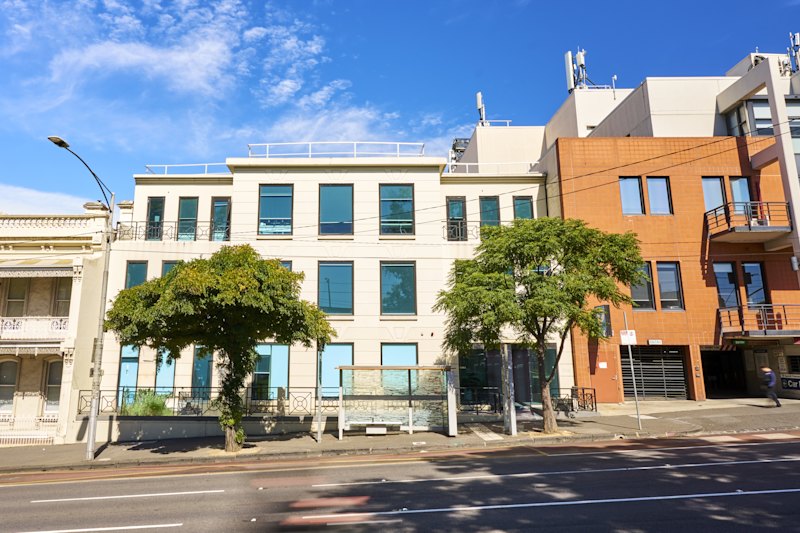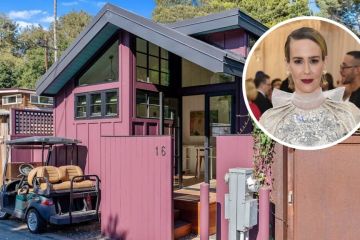How David’s home renovation stopped his son’s asthma attacks
Every night in winter, David McEwen would put his young son Charlie to bed in a room warmed with a gas heater just outside the open door. Regularly, he’d hear him wheezing through the night, and several times, when he was fighting for breath, he had to race him to hospital.
But that all changed when McEwen and his wife, Felicity Stevens, renovated their old house on Sydney’s northern beaches and went all-electric.
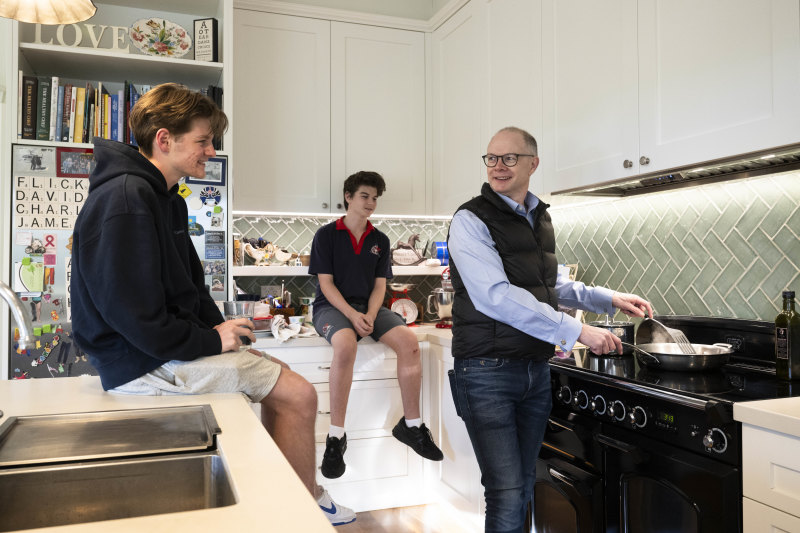
“Charlie hasn’t needed his Ventolin puffer since,” said McEwen, 53. “It’s been quite transformative for us. It was so awful, as a parent, to see him wheezing away every winter and in obvious distress. But as soon as we did the renovation, we were able to throw away his puffer.
“It was quite incredible, the difference. Of course, we’re so glad we got rid of the gas inside the house, with reverse-cycle air-conditioning and an induction cooker, and now we’re getting quotes to replace the gas water heater outside with an electric heat pump.”
Charlie, 17, is now perfectly healthy in their house in Balgowlah, while his younger brother James, 15, always has been. “But it’s when we started reading the literature about the links between gas and childhood asthma that we understood,” said McEwen.
Asthma Australia research shows that children living in a home with gas stoves have a 42 per cent increased risk of having current asthma and a 24 per cent greater chance of being diagnosed with asthma at some point in life.
That experience of asthma in kids is something Virginia Jones, the Australian program manager of the Global Cooksafe Coalition (GCC), hears about regularly. With a mission to promote safe and sustainable cooking – fossil-fuel-free and powered by renewable energy – in new kitchens by 2030 and in existing ones by 2040, she says some of the benefits can be a surprise.
“We often hear that getting rid of gas from homes in Australia makes a difference in ways that people weren’t expecting,” Jones said.
“But the research shows if you’re going to have asthma, get gas out of the home. A new study in the US has found that children with asthma are nine times more likely to visit an emergency department than those without.”
At a time of rising gas prices, although electricity costs are variable, transitioning from gas to electric does also lead to cheaper bills, Jones says, and is becoming more and more appealing. In the kitchen, it can be as cheap and easy as placing an induction cooktop over the gas rings and plugging it in, or having a plumber turn off the gas and an electrician install one onto a cooker or a new cooker.
Around 38 per cent of Australians have gas stoves, and 65 per cent have gas for either cooking or heating. The campaign to get rid of gas has been backed by property companies, renowned chefs like Neil Perry and Peter Gilmore, governments and public health and climate experts.
Social worker Anneliese Alexander is someone else who feels she found out firsthand about the link between gas and asthma. When her daughter Eleanor, now 11, was a baby, she’d be put in front of a gas heater.
“When she got her first little virus, it turned into full-blown breathing difficulties to the point of her chest cavity coming in and becoming so red in the face,” said Alexander, 40, who lives in Holsworthy, south-west Sydney.
“She had to be put on Ventolin and steroids even as a young baby. It was really awful.
“Then, at 14 months old, she was walking around me when I was cooking on the gas stove, and she started coughing, and it became a full-blown asthma attack, and she ended up in hospital. That happened a number of times through her youth.”
It was only when the pandemic hit, and Eleanor was home from school and getting asthma again, that Alexander started reading the research on gas and asthma. She then went all-electric. “Now she doesn’t have asthma any more or breathing issues, and I chucked out her Ventolin 18 months ago.”
Frankie Muskovic, national policy director of the Property Council of Australia, a GCC partner, says the next revision of the National Construction Code should mandate that all new buildings be designed and constructed as fully electric.
“Governments and industry recognise that efficient electrification is the fastest, cheapest way to decarbonise our built environment, which accounts for more than 50 per cent of Australia’s electricity use and 23 per cent of all emissions,” she said.
“The electrification of Australia’s buildings demands long-term policy certainty, ambitious goals and programs to support the take-up of efficient electric appliances like heat pumps and induction cooktops.”
We recommend
We thought you might like
States
Capital Cities
Capital Cities - Rentals
Popular Areas
Allhomes
More
